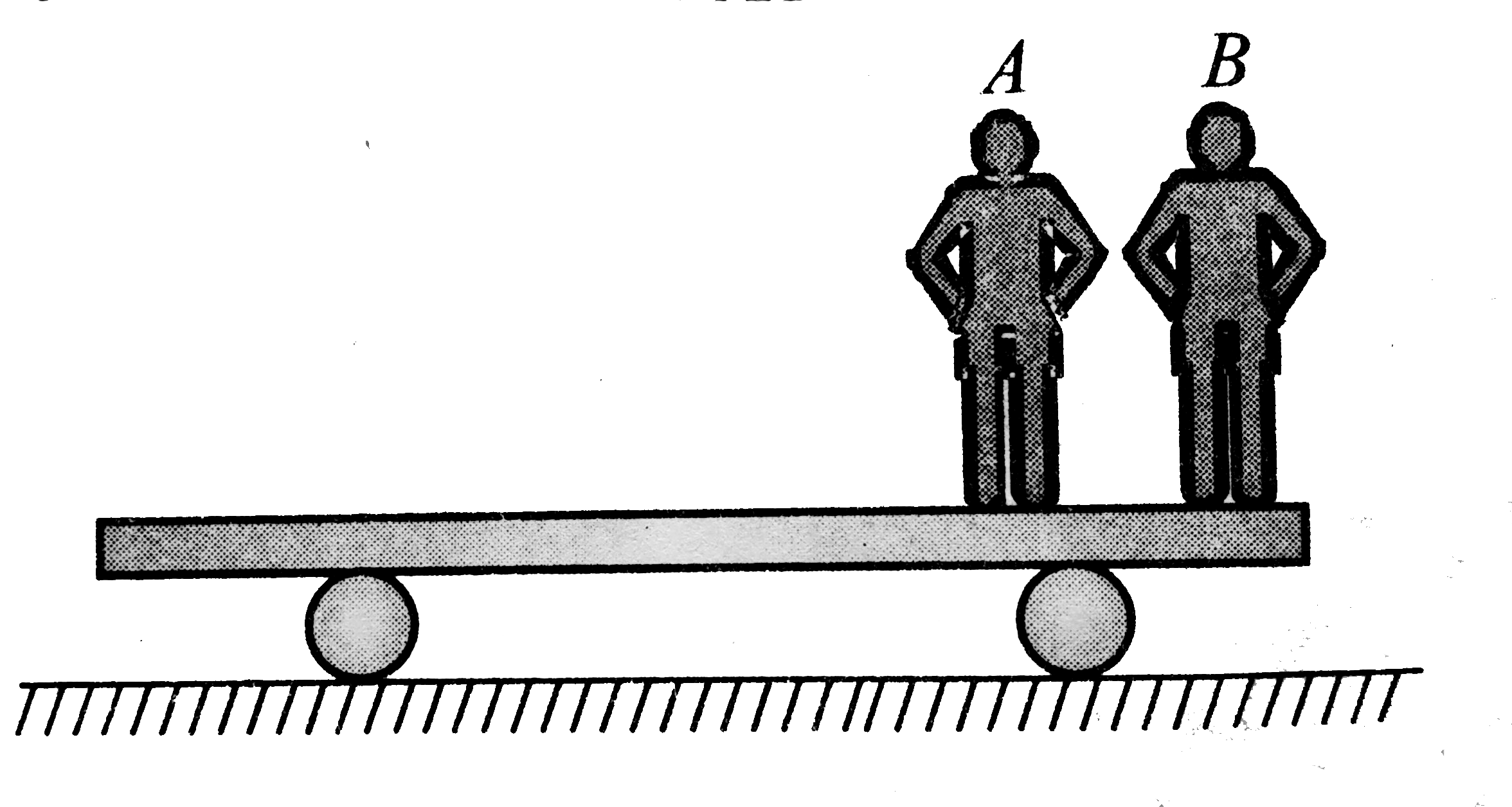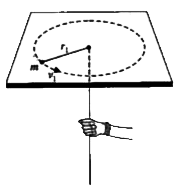A coolie carrying a load on his head and moving on a frictionless horizontal platform does no work. Explain the reason why.
Step-by-Step Solution:
1. Understanding Work Done:
Work done (W) is defined as the product of the force (F) applied to an object, the displacement (D) of that object, and the cosine of the angle (θ) between the force and the direction of displacement. The formula is given by:
W=F⋅D⋅cos(θ)
2. Identifying the Forces:
In this scenario, the coolie is carrying a load on his head. The force exerted by the coolie is the weight of the load acting vertically upward.
3. Analyzing the Displacement:
The coolie is moving horizontally on a frictionless platform. Therefore, the displacement of the coolie (D) is in the horizontal direction.
4. Determining the Angle:
The angle (θ) between the force (which is vertical) and the displacement (which is horizontal) is 90 degrees.
5. Calculating Work Done:
Substituting the values into the work formula:
W=F⋅D⋅cos(90∘)
Since cos(90∘)=0, we have:
W=F⋅D⋅0=0
6. Conclusion:
Therefore, the work done by the coolie while carrying the load on a frictionless horizontal platform is zero because the angle between the force and the displacement is 90 degrees.
Work done (W) is defined as the product of the force (F) applied to an object, the displacement (D) of that object, and the cosine of the angle (θ) between the force and the direction of displacement. The formula is given by:
W=F⋅D⋅cos(θ)
In this scenario, the coolie is carrying a load on his head. The force exerted by the coolie is the weight of the load acting vertically upward.
The coolie is moving horizontally on a frictionless platform. Therefore, the displacement of the coolie (D) is in the horizontal direction.
The angle (θ) between the force (which is vertical) and the displacement (which is horizontal) is 90 degrees.
Substituting the values into the work formula:
W=F⋅D⋅cos(90∘)
Since cos(90∘)=0, we have:
W=F⋅D⋅0=0
Therefore, the work done by the coolie while carrying the load on a frictionless horizontal platform is zero because the angle between the force and the displacement is 90 degrees.
Topper's Solved these Questions
- SAMPLE PAPER 2011BOOK - ICSECHAPTER - SAMPLE PAPER 2011EXERCISE - SECTION-II
41 Videos
- SAMPLE PAPER 2 (PHYSICAL EDUCATION)BOOK - ICSECHAPTER - SAMPLE PAPER 2 (PHYSICAL EDUCATION)EXERCISE - MULTIPLE CHOICE QUESTIONS
50 Videos
- SAMPLE PAPER 2012BOOK - ICSECHAPTER - SAMPLE PAPER 2012EXERCISE - SECTION-II
43 Videos
Similar Questions
A coolie X carrying a load on his head climbs up a slope and another coolie Y carrying the identical load on his head moves the same distance on a frictionless horizontal platform. Who does more work. Explain the reason
View SolutionA person is holding a suitcase and moving on a horizontal platform. Is he doing any work?
View SolutionA boy carrying a school bag on his shoulder does no work . (Why)
View SolutionA smooth sphere A is moving on a frictionless horizontal plane with angular speed ω and centre of mass velocity υ. It collides elastically and head on with an identical sphere B at rest. Neglect friction everywhere. After the collision, their angular speeds are ωAandωB respectively. Then
View SolutionTwo persons, A of mass 60kg and B of mass 40kg, are standing on a horizontal platform of mass 50kg. The platform is supported on wheels on a horizontal frictionless surface and is initially at rest. Consider the following situations.

(i) Both A and B jump from the platform simultaneously and in the same horizontal direction.
(ii) A jumps first in a horizontal direction and after a few seconds B also jumps in the same direction. In both the situations above, just after the jump, the person (A or B) moves away from the platform with a speed of 3m/s relative to the platform and along the horizontal.
In situation (i), just after both A and B jump from the platform, velocity of centre of mass of the system (A,B and the platform) is
View SolutionAn 80kg man is riding on a 40kg cart travelling at a speed of 2.5m/s on a frictionless horizontal plane jumps off the cart, such that, his velocity just after is zero with respect to ground. The work done by him on th esystem during his jump is given as A4KJ (Ain integer). Find the value of A.
View SolutionA man carries a load on his head through a distance of 5 m. The maximum amount of work is done when he
View SolutionTwo identical 5kg blocks are moving with same speed of 2ms−1 towards each other along a frictionless horizontal surface. The two blocks collide, stick together, and come to rest. Consider the two blocks as a system. The works done by external and internal forces are, respectively,
View SolutionA mass m is attached to a string passing through a small hole in a frictionless, horizontal surface. The mass is initially orbiting with a velocity v1 in a circle of radius r1 The string is then slowly pulled from below, decreasing the radius of the circles to r2 (i) What is the speed of the mass when the radius is r2 ? (ii) What is the tension in the string ? (iii) What is the work done in moving the mass m from r1 to r2?

View SolutionA force F=50N is applied at one end of a string, the other end of which is tied to a block of mass 10kg. The block is free to move on a frictionless horizontal surface. Take initial instant as θ=30∘ and final instant as θ=37∘. For the time between these two instants, answer teh following questions?

Net work done by the force F on the block is
View Solution
